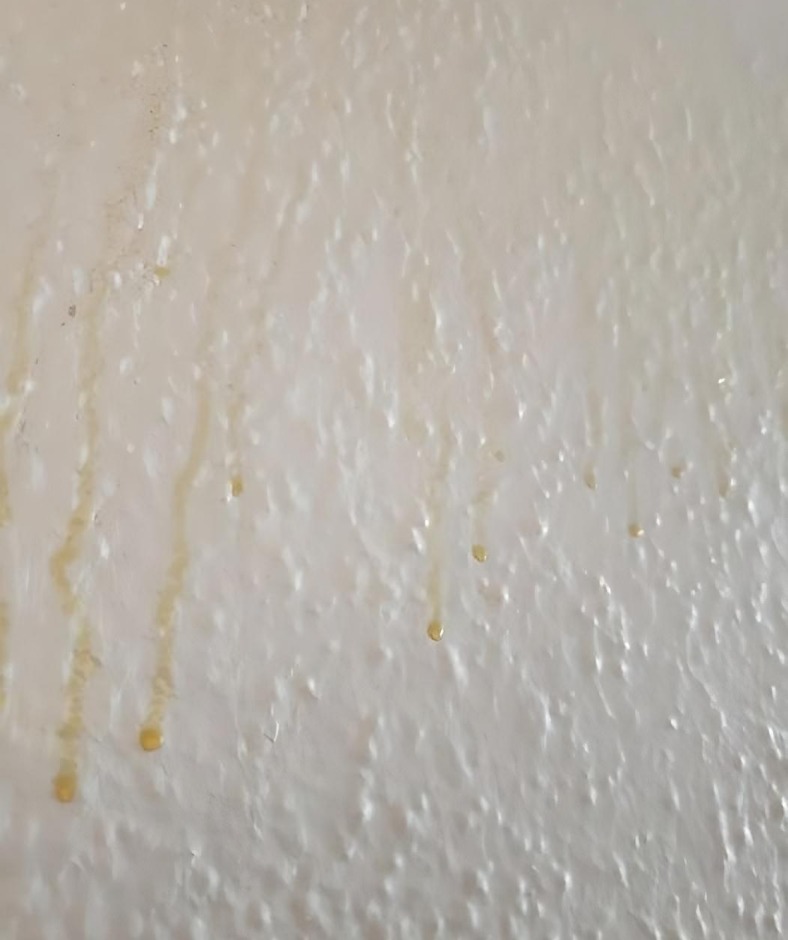If you’ve noticed yellow drips running down your bathroom walls, it can be pretty unsettling. The bathroom is supposed to be a clean and refreshing space, but yellow stains? That’s a definite head-scratcher. If you’re facing this issue, you’re probably wondering, “What is causing this?” Don’t worry—you’re not alone. In this article, we’ll explore the possible reasons behind these yellow drips and how you can address them.

What Exactly Is Mold, and Why Is It Dangerous?
One common culprit in bathrooms is mold, and it’s not just unsightly—it can be harmful. Mold is a type of fungus that grows in damp, humid environments, which makes bathrooms an ideal breeding ground. When mold spores land on moist surfaces, they quickly latch on and spread. Although some people think of mold as harmless, certain types can trigger allergies, respiratory problems, and even more serious health issues if left untreated.
If the yellow stains in your bathroom are accompanied by a musty odor, or if your allergies flare up when you’re in there, mold could very well be the cause. Bathrooms are warm and humid, offering the perfect conditions for mold to grow, especially if there’s poor ventilation.
What Causes Mold to Grow in Bathrooms?
Mold growth in bathrooms is almost inevitable unless you take preventive measures. Every time you shower, steam rises and creates condensation on walls, ceilings, and even tiles. Without proper airflow, this moisture gets trapped, making your bathroom a prime environment for mold to thrive.
Mold often hides in sneaky spots—behind toilets, under sinks, or in ceiling corners. Sometimes, it manifests as yellow or black streaks. It’s not uncommon for mold to grow around windows, on shower curtains, or near plumbing fixtures. If you see yellow drips, mold may already be setting into your bathroom walls.
Yellow Drips: What Else Could They Be?
While mold is a strong possibility, it’s not the only explanation for those yellow drips. Here are a few other potential causes:
1. Nicotine Stains
If your home’s previous occupants were smokers, the yellow stains could be nicotine residue. Over time, nicotine can seep through paint, especially in high-moisture areas like bathrooms. Even if you’ve repainted, the stains can reappear as the nicotine pushes through the new layers of paint.
2. Soap Scum and Hard Water Deposits
Another possibility is soap scum mixed with hard water deposits. If you live in an area with hard water, the minerals can accumulate on surfaces, and when combined with soap, they can leave yellowish streaks on your walls.
3. Yellow Mold and Mildew
Yes, mold can be yellow. In its early stages, especially when combined with soap scum or moisture, mold may appear yellowish. This type of mold can be just as harmful as black mold, so it’s important to address it as soon as possible.
How to Prevent and Remove Mold from Your Bathroom
Prevention is your best defense against mold and other causes of yellowing in the bathroom. Here are a few practical tips to help you keep your bathroom mold-free:
1. Improve Ventilation
Make sure your bathroom is well-ventilated. Open windows, run exhaust fans, and leave the door ajar after showering to let moisture escape. Reducing humidity will help prevent mold from forming.
2. Wipe Down Surfaces
After each shower, take a few minutes to wipe down the walls and surfaces where moisture tends to gather. This small habit can make a big difference in keeping mold at bay.
3. Use Mold-Resistant Paint
If you’re renovating or repainting, consider using mold-resistant paint. This type of paint is specially formulated to prevent mold from sticking to your walls.
4. Clean Regularly
Regular cleaning of your shower and bathtub is crucial. Use a bathroom cleaner that targets mold and mildew to keep these harmful fungi from developing.
How to Clean Mold Properly
If you’ve already spotted mold on your bathroom walls, don’t panic. Here’s how to get rid of it effectively:
1. Use a Bleach Solution
For non-porous surfaces like tiles and sinks, mix one cup of bleach with a gallon of water and use it to scrub the affected areas. This solution will kill mold and help remove stains.
2. Try Natural Alternatives
If bleach feels too harsh, opt for natural cleaners like vinegar or hydrogen peroxide. These alternatives are effective at eliminating mold without filling your bathroom with chemicals.
3. Wear Protective Gear
Always wear gloves and a mask when cleaning mold to avoid inhaling spores or coming into contact with harsh cleaning agents.
4. Know When to Call in the Pros
If the mold problem is extensive or deeply embedded in walls, it’s time to call a professional mold removal service. Mold can penetrate surfaces and become difficult to eradicate without expert help.
Conclusion: Take Action Before It Spreads
Yellow drips running down your bathroom walls are a clear sign that something’s not right. Whether it’s mold, soap scum, nicotine stains, or hard water deposits, it’s important to identify and address the root cause quickly. Regular maintenance, proper ventilation, and fast action will help keep your bathroom fresh and mold-free. If the problem persists or worsens, don’t hesitate to consult a professional.
By staying proactive, you can maintain a clean, safe, and welcoming bathroom—without any unwanted yellow stains.





